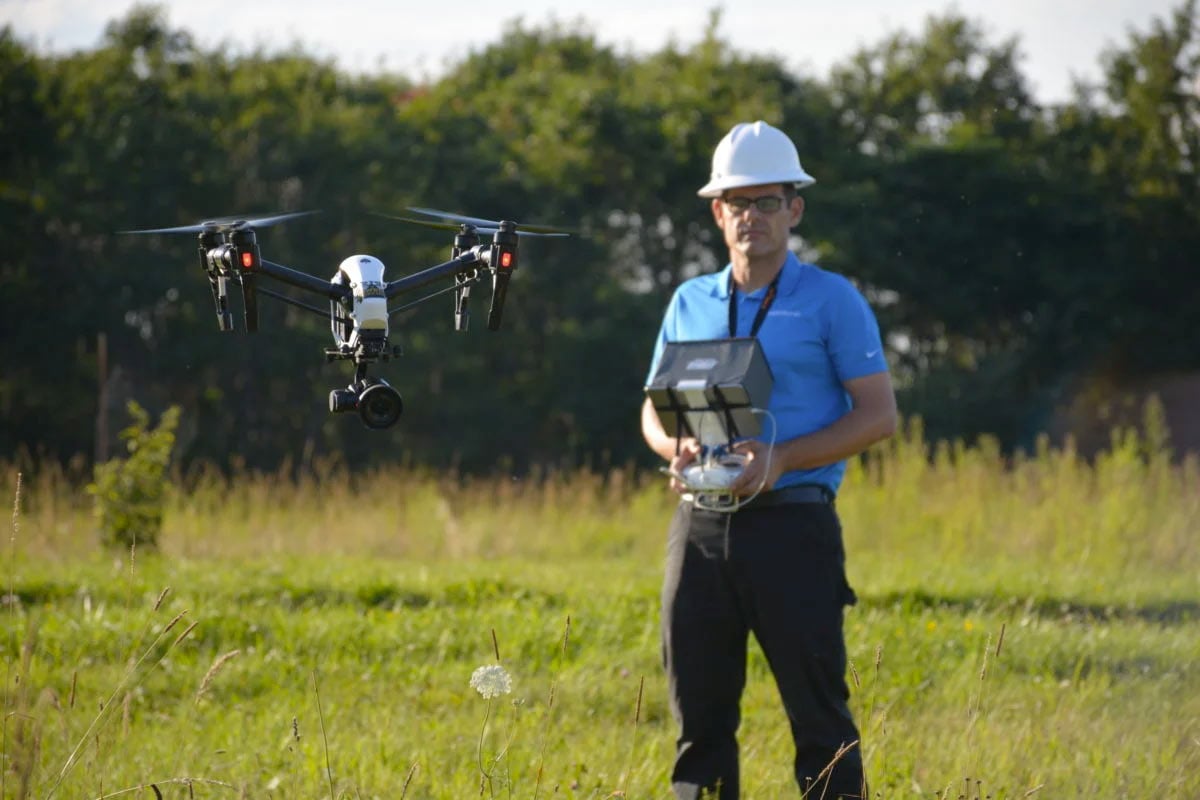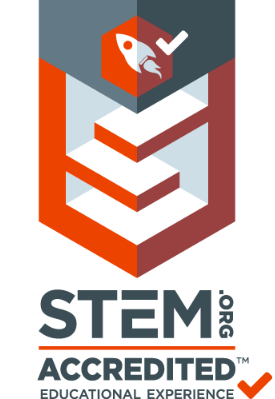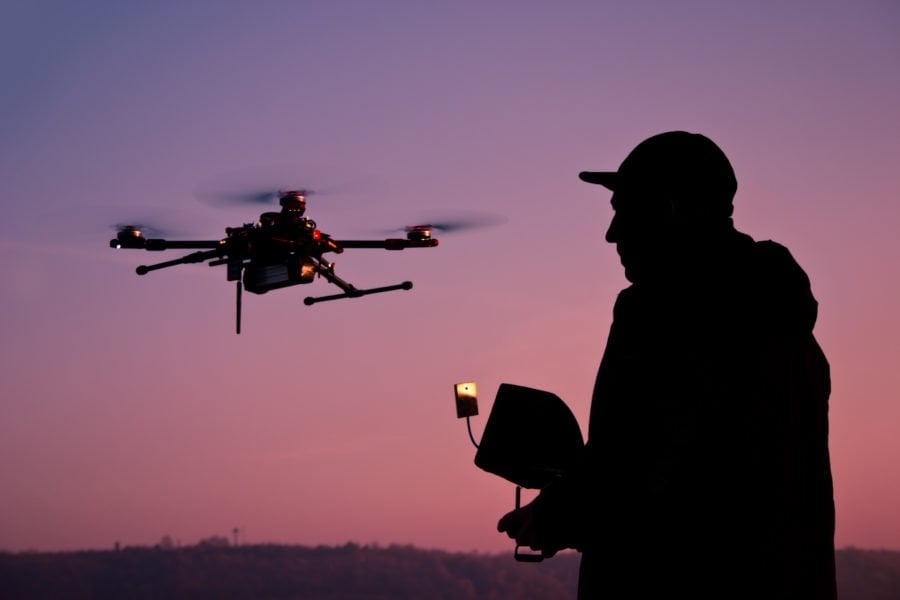
Guide to Getting Your Part 107 Drone License
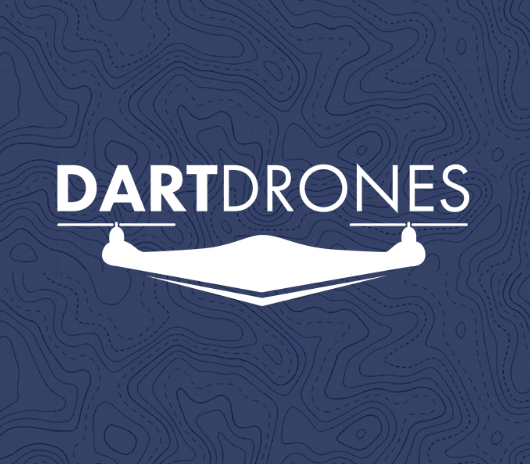 By Chief Pilot DARTdrones
By Chief Pilot DARTdrones Part 107, the new FAA commercial drone regulation, allows drone pilots to fly UAS or UAVs for business purposes. To fly under Part 107, you need to pass the FAA drone pilot test and receive your commercial drone license. The two hour, 60 question test requires extensive studying. Our course teaches you everything you need to know to get your commercial drone license.
The Part 107 Remote Pilot Certificate with an sUAS Rating
To legally fly a drone for commercial use, the pilot of the aircraft must have a remote pilot certificate with a small UAS rating. To obtain a remote pilot certificate, a drone pilot must pass the FAA’s Airman Knowledge Exam. The Federal Aviation Administration needs to make sure that all commercial drone pilots have the ability to act responsibly, coordinate with Air Traffic Control in case of an emergency, read aeronautical maps, and abide by all regulations pertaining to UAV regulations and also general aviation regulations.
DARTdrones has trained thousands of pilots to pass their Part 107 Exam with both our In-Person Part 107 Test Prep Course and Online Part 107 Test Prep Course.
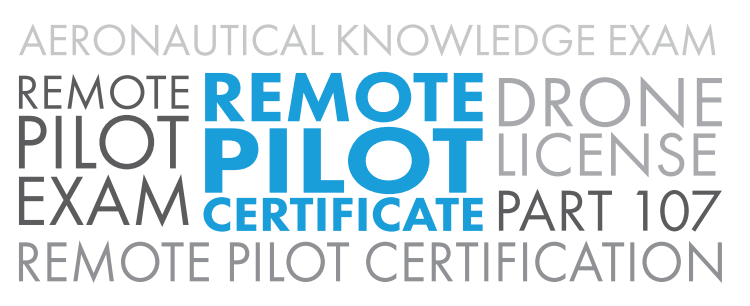
The remote pilot certificate is sometimes referred to as:
- Drone License
- Remote Pilot Exam
- Aeronautical Knowledge Exam
- Part 107
- Remote Pilot Certification
Operational Requirements Under Part 107
- Flights must be conducted within 400 feet of the ground or 400 feet from the top of a structure, provided the sUA remains within 400 feet of the structure itself.
- Flights within Classes of Controlled Airspace require a specific Airspace Authorization or Waiver issued via the FAA using an online submittal system.
- The unmanned aircraft must remain within the unaided visual line of site of the pilot and/or a visual observer with a direct line of communication to the pilot.
- The unmanned aircraft cannot be flown directly above any non-participants or members of the public.
- All aircraft utilized must weigh less than 55 lbs on takeoff, including everything onboard (cameras, lights, etc.) in order to qualify as a sUAS under Part 107.
- All sUAS pilots for Part 107 operations must possess an FAA issued Remote Pilot Certificate with an sUAS Rating.
- All sUAS pilots must pass a biannual flight review every 2 years.
What Drone Pilots Say About the Exam:
The Airman Knowledge Test was harder than expected! No messing around. DARTdrones helped prepare me with a great foundation! Must know your stuff in order to pass! Sean DesCombes
Definition of "Commercial Use"
The FAA considers any drone flight that promotes a business in any way to be a “commercial” UAV flight (also known as non-recreational use). Non-recreational use, as defined by the FAA, can include everything from a fire department conducting search and rescue missions, a business filming event footage to train employees, and architects or engineers surveying property.
Who Does Not Need to Take the Part 107 Exam?
- Recreational Users: Recreational users are not required to take the Part 107 exam.
- Part 61 Pilots: Instead of taking the Part 107 Remote Pilot Exam, Part 61 certificate holders who have completed a flight review within the past 24 months and have an active medical certificate can elect instead to complete an online training on www.faasafety.gov called “Part 107 small Unmanned Aircraft Systems (sUAS) ALC-451” and subsequently apply for a rating by filling out an FAA form called “8710-13.” Once both requirements have been completed, Part 61 pilots can legally operate a UAV for commercial purposes.
- Under 16: Sixteen is the minimum age to obtain a Part 107 Remote Pilot Certificate
Expectations for Taking the Drone Pilot License Exam
Test-takers have two hours to answer 60 multiple choice questions. A 70% or higher is considered a passing grade. To pass the FAA Airman Knowledge Exam, a remote pilot must fully understand twelve different aeronautical knowledge topics including:
- Regulations Under Part 107
- Airspace Classifications
- Flight Restrictions
- Aeronautical Charts
- Airport Operations for Drone Pilots
- Radio Communications for sUAS Pilots
- Aviation Weather for Drone Pilots
- Maintenance and Preflight Procedures
- Crew Resource Management and Aeronautical Decision Making
- sUAS Loading and Performance
- Hazards to Flight and Emergency Procedures
- Physiology for Drone Pilots Under Part 107
Study Time
Most of our students take a total of 15 – 20 hours to study for the exam. When studying with our In-Person Part 107 Test Prep Course, students typically complete the 8 hours of in-person training and then continue to study with our Online Part 107 Test Prep Course. Most students take and pass the exam between two and three weeks after completing the course.

Sample Question: Question 10 of our 300+ Practice Test Questions
What are the cloud clearances required to operate a sUAS in the NAS?
A. 400’ below / 1000’ horizontal
B. 500’ below / 2000’ horizontal
C. 500’ below / 1000’ horizontal
The exam costs $150 for every attempt. If a test-taker fails the exam, they must wait 14 days before taking the exam again. DARTdrones students have achieved a 99% pass rate. Students who complete our course should not expect to pay for the exam multiple times.
Registering for the Drone Certification Exam
The Airman Knowledge Exam must be taken at an FAA approved Airman Knowledge Testing Center. There are over 670 testing centers across the country. Students are typically able to find a testing center with availability near their home. Each testing center has a proctor and a few computer stations for the electronic exam. Test-takers can pre-register and pay for the exam on www.catstest.com, but will not be able to choose a test date. Within a few days, a representative from a CATS Testing Center will call to reserve a time slot. Test-takers can also call the CATS facility directly to book an exam time at 800-947-4228.
Timeline After Taking the Drone License Exam
Test-takers will receive their score from the exam immediately upon completing the test. After passing the exam, remote pilots need to submit their test score on IACRA. Within one week, a temporary certificate is typically made available on the IACRA site. Remote pilots can then fly legally with the temporary certificate. Within 1 to 3 months, a permanent Remote Pilot Certificate arrives in the mail.
What Our Students Are Saying:
The class was GREAT!! My instructor did a fantastic job explaining the many different areas for preparing to take the Part 107 exam. She made it interesting with many demos/examples to explain the topics. The questions at the end of each module was a great way to test our understanding and to give an idea of what the exam might look like. Ed Gysler, Bald Eagle Aerial Imaging
Drone License Exam Topics
- Part 107 Definitions
- Registration Requirements
- Conditions for Safe Operations
- PIC Responsibilities
- Visual Observers
- Visual Line of Sight
- Hazardous Operations
- Daylight Operations
- See and Avoid of Other Aircraft
- Operating Restrictions
- Eligibility Requirements
- Accident Reporting
- Waiver Policy
- National Airspace System
- Air Traffic Control
- Clearances and Permissions
- Operations in Uncontrolled Airspace
- Operations in Controlled Airspace
- Prohibited and Restricted Areas
- Temporary Flight Restrictions
- Filing NOTAMS
- Special Use Airspace
- Military Training Routes
- VFR versus IFR Flight Rules
- Aeronautical Charts
- Reading Sectional Charts
- Chart Legend
- Navigation Basics
- Chart Interpretation
- Difficult Chart Test Questions
- Reading Operating Near Towered and Non-Towered Airports
- Traffic Patterns
- Runway Markings and Signage
- Heliports
- Controlled Tower Communication Procedures
- ATIS (Airport Terminal Information Service)
- Standard Communications
- Self-Announce Procedures
- Common Traffic Advisory Frequency
- UNICOM/ MULTICOM
- Traffic Pattern Communications
- Phonetic Alphabet
- Atmospheric Basics
- Types of Weather
- Stages of a Thunderstorm
- Types Cloud Formations
- Micrometeorology
- Weather Planning
- Weather Briefings
- Reading METARS
- Aviation Forecasts (TAFs)
- Weather Factors and Their Effect on sUAS
- Scheduled Maintenance
- Unscheduled Maintenance
- Preflight Inspection
- Record Keeping
- FAA Inspection and Testing
- Hazards and Risks
- Decision Making
- Risk Management for Drone Pilots
- Crew Resource Management
- Crew Coordination
- Hazardous Attitudes
- Situational Awareness
- Effective Communication
- Basic Aerodynamics
- Aircraft Loading
- Weight and Balance
- Stability and Control
- Center of Gravity
- Longitudinal Stability
- Performance Data
- Common Flight Hazards
- Accident Factors
- Reporting In-Flight Emergencies
- Emergency Communications
- Lost Link / Fly Away Procedures
- Low Battery Procedures
- Lithium Battery Hazards
- System Malfunction
- Fail Safe Procedures
- Airborne Inspections
- Wildlife Hazards
- Stress
- Fatigue
- Dehydration
- Heat Stroke
- Hyperventilation
- Vision Impairment
- Impacts of Drugs and Alcohol
- Determining Fitness for Flight
- Physiological Considerations
- Part 107 Regulations Requirements
What Our Students Say About Our Drone Training Class
“Comprehensive and informative! Well worth the time. The instructor ensured that students understood the concepts as they were presented. “
“Team thought Mark was great. Super informative. Worked really well with the limited time we had. Mark did a great job of identifying the important information not only needed for the test, but for practical flying. Prep material and study guide are amazing. Highly recommended using you and DARTdrones.”
“Once again Colin knocked it out of the park. His knowledge and professionalism exemplifies his passion to teach new pilots key and important issues concerns and updates about the drone industry.”
“The class was jam packed and interactive which helped to understand Part 107 for those of us that are new to the aviation world. The flight class was invaluable for me! I have never even touched a drone prior to the class and left with some confidence that I can fly either the Phantom or Inspire without destroying my investment in equipment on the first flight.”
“Excellent courses. The instructor made things interesting and informative for both the novice and experienced pilot. No matter your level of experience flying drones, you will take away valuable knowledge and skills.”
“I absolutely loved my two day course with DARTdrones! I was excited before I got there but got even more excited about flying drones commercially after attending class! Karl was an exceptional instructor and made the class fun as well as informative!”
“The instructor was great! He used his real world experiences in the field to tie in the industry material. I would highly suggest this training to anyone looking to gain knowledge in the sUAS field.”
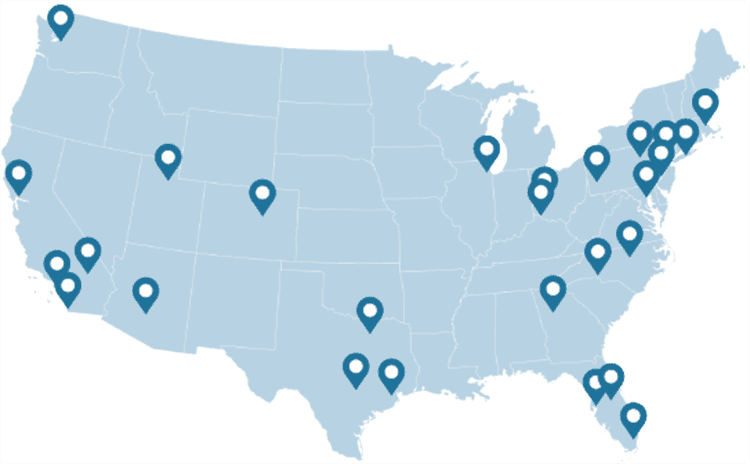
WHY DARTDRONES? We have a proven track record for training pilots in dozens of industries.
INSTRUCTORS
Our instructors have manned aviation experience flying airplanes and helicopters and have gained the highest drone piloting recognitions in the industry. Many own successful UAS businesses themselves.
NATIONWIDE
As featured on ABC's Shark Tank, we are the nation's leading drone training company with an extensive network of alumni and partners throughout the country.
MATERIAL
Created and refined by UAS training experts, our curriculum is the best in the industry and has been tried and tested by clients in dozens of industries.
TRAINED
With a community of over 65,000 drone enthusiasts across the US and internationally, DARTdrones is at the forefront of UAS technology.
Expert Instructors
Our students absolutely love our instructors! Our classes are engaging, fun, and extremely informative.
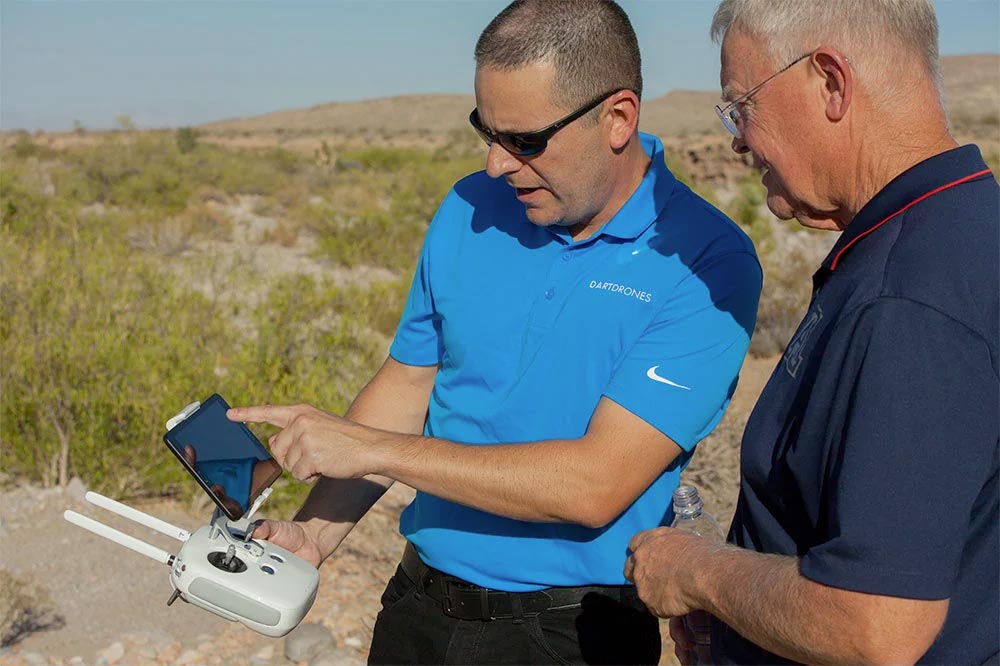
Advanced Training Courses
We don’t just train our students on the basics. We have extensive advanced training courses to help our alumni succeed in mapping, inspections, disaster response, aerial photography, night operations, and search and rescue.
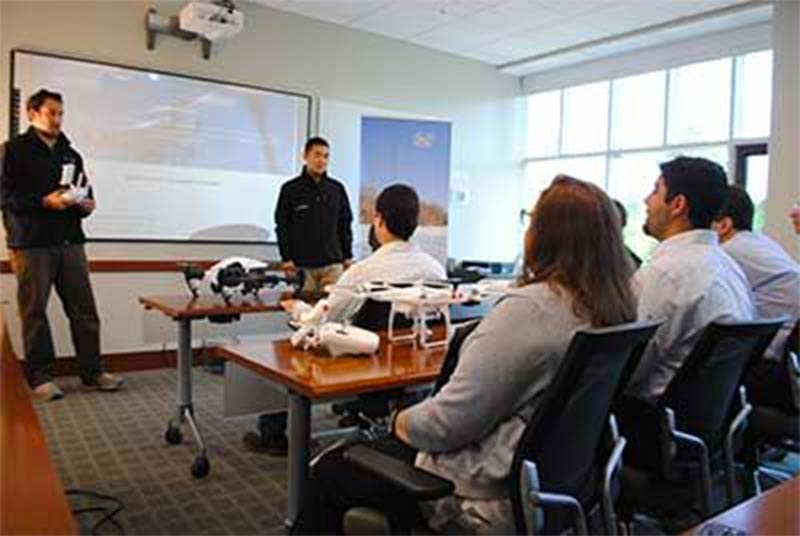
Industry Certified and Vetted Curriculum
Our curriculum has been vetted and certified by AUVSI, the leading UAS industry association, to ensure professional quality.
